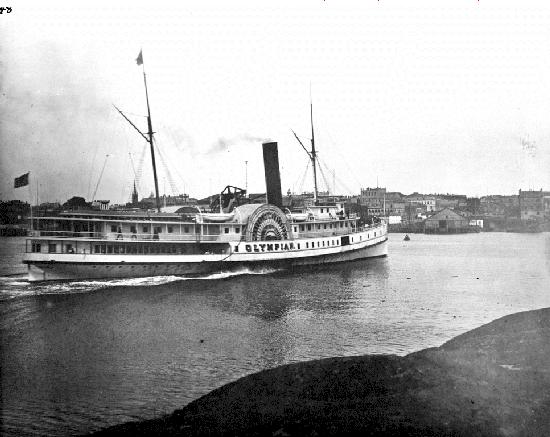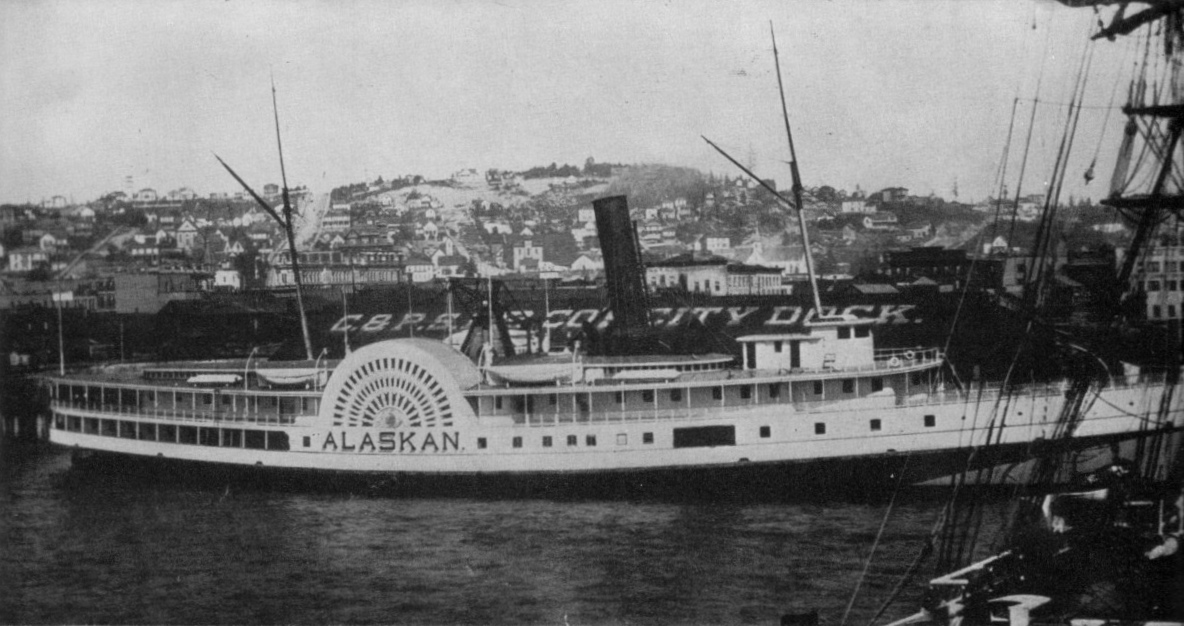PS Olympian
Wreck Location
The Olympian (known locally as "Vapor Olympian") lies along the northern shore of Possession bay in Chile. None of the wreck is underwater and is more than explorable by foot. Transportation to the site is likely difficult as no major cities or towns are nearby, but there is a major highway present. The wreck is rusty and has jagged pieces, so explore at your own risk. The beach is a pebble covered surface, meaning sandles or some form of shoe is recommended. The best time to visit would be during winter in the northern hemisphere.
~ GPS Shipwreck Location ~
Latitude: -52° 14' 51.72" S Longitude: -69° 1' 55.2" W
Description

Olympian was constructed in 1883 at Harlan and Hollingsworth shipyards in Wilmington, Delaware for the Oregon Railway and Navigation Company. Her near sister ship, the Alaskan, was constructed at the Delaware Iron Ship Building and Engine Works in Chester, Pennsylvania a year later. Incidentally, this was the same place where in 1880, the OR&N's flagship vessel, Columbia was constructed. Olympian travelled around the Tierra del Fuego of Argentina to the Pacific Northwest.
Although company share holder and president Henry Villard had made ingenious business decisions in the past with OR&N, most notably the electric steamship Columbia, the Alaskan and Olympian proved to be financial disasters. The two paddle steamers were designed and inspired from Chesapeake Bay steamers. However, the sheer size of the pair compared to the smaller steamboats and larger steamships already operating in the Northwest ensured their failure from the start.
Originally placed on the Columbia River, the Alaskan and Olympian were too large to operate up river where the majority of money could be made and were relegated to Portland and Astoria in Oregon. Both ships were moved to Puget Sound in 1888, operating between Seattle and Victoria, British Columbia. In 1887, Olympian had even experimented travelling between BC and Alaska. Yet the twins were still unable to turn a profit. The failure of the two vessels earned them the nicknames "Villard's White Elephants" and likely helped lead to the bankruptcy and reorganization of OR&N as well as Henry Villard being ousted from company management and being socially exiled to Europe.
The lack of dry docks in the Pacific Northwest meant repairs needed to be carried out in San Francisco, California. While in transit for such repairs, Alaskan was lost in a violent storm in 1889. Her suriviors being rescued by the tugboat Vigilante and OR&N flagship Columbia. Olympian continued operations until 1890 when the company decided to retire her from all operation and leave her moored indefinitely along the Willamette River in Portland, Oregon.
In 1904, the Olympian, Columbia and George W. Elder were transferred to the San Francisco and Portland Steamship Company upon the Union Pacific takeover of OR&N. In 1906, Olympian was sold to east coast interests and was placed under tow by the passenger liner Zeelandia. In transit to the east coast, Olympian broke free of her tow and ran aground along the Chilean coastline. The vessels Huemul and Keel-Row were able to refloat Olympian, but the salvage failed and she ran aground again. She was abandoned and all valuable pieces of her wreck removed or scrapped.
Today, the remains of the Olympian still lie where she came to rest over a century ago. Only sections of her iron hull remain. However, the boilers, walking beam engine, a single paddle wheel along her starboard side and smokestack base remain. The stern is either buried or rusted away completely. The bow lies on its starboard side iron plates eaten through revealing the hull's iron skeleton. All the wooden superstructure including deckhouses, decks, pilothouse, masts and single funnel are gone.
Footnotes
Further details and photos of Olympian's remains.
Further photographs and details of Olympian

The sister ship of the Olympian was the Alaskan. As aforementioned, Alaskan was lost in 1889 to a storm drowing 21 or more people, a massive loss of life for a steamer of her size. The exact spot of where the Alaskan sank is unknown but is somewhere in deep ocean water south of Point Blanco in Oregon.